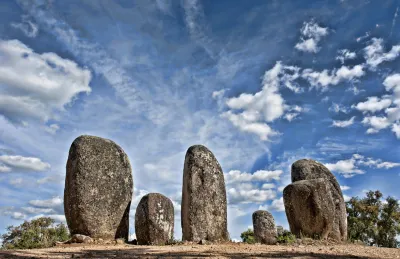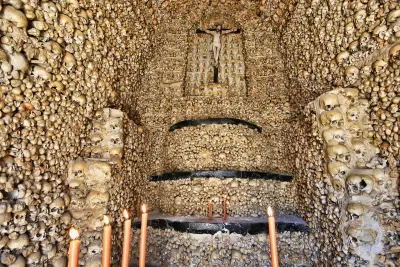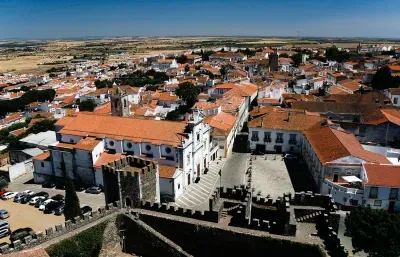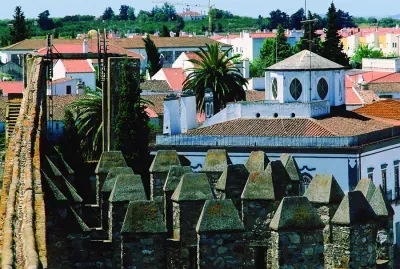Évora Cathedral

Évora's imposing cathedral (Sé Catedral de Évora) is situated in the very heart of the old city and the UNESCO World Heritage site. The oldest parts of the building date back to the 12th century, which was when the Moors were finally driven out by the Christians. As a consequence it is no coincidence that this mighty cathedral has certain aspects which resemble a fortress. Probably most people's first view of the cathedral is the façade which looks out over the Évora's main square.
Almendres Cromlech

Whilst Évora may be able to boast some quite impressive historic credentials there is a site, less than half an hour's drive away that predates anything in the city by thousands of years. Built in the early Stone Age the Almendres Cromlech (Cromleque dos Almendres) dates back over 6,000 years. But it isn't just the age which is impressive - this is the largest megalithic site to be found anywhere on the Iberian Peninsula. Although not quite of the scale of Carnac in Britanny, Almendres is far more atmospheric.
Cromleque dos Almendres

A closer look at some of the standing stones that make up the Cromleque dos Almendres (Almendres Cromlech) near Evora. The megalithic complex here date back several thousand years to the Stone Age and is, in fact the largest of its type on the Iberian Peninsula. There are 95 granite stones arranged in several formations. Although its exact purpose may never be known it is thought to have some astrological significance.
Marvão Castle view

The sweeping view from the 13th century Marvão castle which is perched atop this hilltop village in Northern Alentejo. The castle was built to protect the Serra of Alto Alentejo from the Spanish just across the nearby border.
Capela dos Ossos, Évora

The Medieval Capela dos Ossos (Chapel of Bones) in Evora is a spectacularly morbid celebration of death. As such it is one of Évora's most popular attractions.
Located within the huge, Gothic church of São Francisco, the Chapel of Bones is everything its name suggests. A vaulted ceiling supported by eight columns is about the only part of the chapel that is not covered in the human skulls and bones. It is estimated that there are over 5,000 skulls decorating the chapel many of which were dug up from the many monastic cemeteries in the area.
Capela dos Ossos - Evora

The Capela dos Ossos (Chapel of Bones) in Evora is a wonderfully macabre reminder of our own mortality. It is located to the rear of the Igreja de São Francisco and was built during the 16th century by one of the Franciscan monks who thought it a nice idea to make his fellow monks contemplate on their own mortality. It seems things got a little carried away as the inside is covered in over 5,000 skulls plus a couple of desiccated corpses dangling from the ceiling!
Grândola, Vila Morena

Memorial commemorationg "Grândola, Vila morena", a folk ballad about the town. The significance of the song is it became the anthem of the 25th of April "Carnation Revolution" which saw dictator Antonio Salazar overthrown. During his regime the song was banned as it celebrated the camaraderie and socialist conscience of the hard working poor of the agricultural south. The memorial celebrates Zéca Afonso's words and the haunting music it was set to.
Beja

View out over the city of Beja in the heart of the Alentejo. This is the old town from the tower of the 13th century castle (Torre de Menagem). Just beyond the castle walls is the cathedral (Se)

